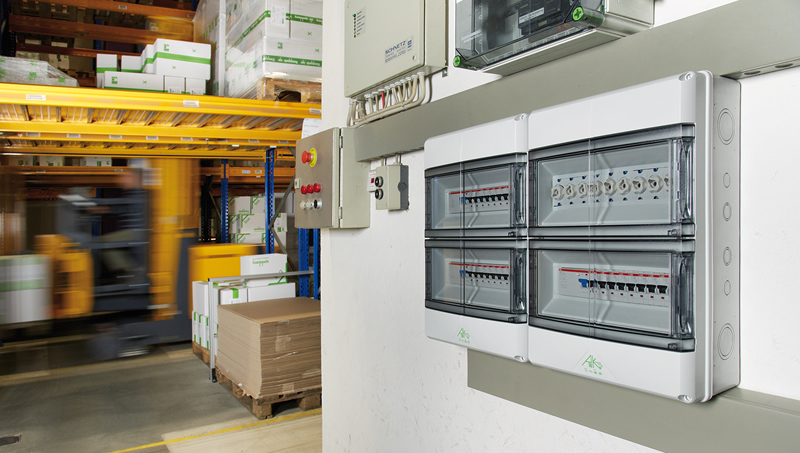Choose smart enclosures for your smart buildings
The smart buildings today use sophisticated control systems to continually optimise heating, lighting, security and other services to the needs of the moment. However, with regularly changing usage patterns, the systems themselves have to be ultra-flexible. Clare McCusker, Area Sales Manager for Spelsberg UK, explains more.
Many of the offices, public and commercial buildings now are designated as ‘smart’, in that they are capable of automating all or most of the building services such as heating, lighting, security and communications. Their goal is to improve energy efficiency, whilst making the working environment comfortable and ensuring security.
They use equipment such as occupancy detectors to reduce lighting, heating or air conditioning in rooms that are not in use. Such sensors may also be used to spot potential burglars and trespassers late at night, to provide security in restricted access areas and to analyse usage patterns. The systems may also monitor or control water usage and renewable energy inputs, such as from roof mounted photovoltaic panels and ground source heating.
Going back a number of years, early attempts at smart buildings often enjoyed only limited success. For the most part, the automated systems worked well initially, but soon became troublesome. In part the problem was due to poor commissioning, which was often done by under-qualified personnel rather than experienced control engineers. However, the main problem was often a lack of flexibility within the design of the control system.
There is now a realisation that public buildings are subject to constantly changing usage patterns. Tenants can leave and new ones move in; new equipment may be installed; particular rooms, floors or other spaces may be repurposed; there will be seasonal changes throughout the year.
Therefore smart building control systems must be adaptable so as to be able to meet such constantly changing demands. This means that there has to be a reprogramming capability and that the hardware is easy to change, reconfigure and swap out.
It is sensible to develop a modular architecture for the hardware, so that most of the system remains undisturbed when minor or local changes are being made. Further, a wise choice of electrical enclosure, such as the Spelsberg AK distribution housing, will facilitate quick and simple changes to the physical hardware.

The AK distribution housing series is certified to EN 60670-24 (also known as VDE 0606-24), which defines special requirements for energy-consuming and protective devices to ensure safety with voltage up to 400V and feed current of up to a 125A. A feature of the AK design that is particularly useful in smart building systems is that the enclosures can easily be mounted adjacent to each other, so that large bespoke control panels can easily be built up and later adapted to meet changing requirements.
Additionally the Perspex windows at the front of each enclosure provide access for the system controls UI’s (User Interfaces) whilst protecting the internal wiring.
The whole AK range has an IP65 rating as standard, which makes it suitable for installation in areas such as wet plant rooms, where there are water pipes and cylinders present and, consequently, the potential for leaks.
Additionally, the high quality finish of the units enhances the overall aesthetic of the range; an important consideration for buildings where the control systems may be viewed by visitors to the control room – or even on permanent display in a prominent location.
Spelsberg can work directly with installers by customising each enclosure with the correct entry options; specifying and installing necessary accessories for each individual use; and by ensuring timely delivery and providing technical assistance.
Smart building control systems are destined to constantly evolve. Thanks to the modularity of the AK enclosure engineers are easily be able to add new controller modules and cable conduits, reconfiguring and expanding the system without having to re-wire the existing units.


